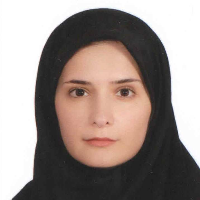Comparative Study of the Musical Painting "The Feast Faridun and Kundrau" in Tahmasebi Shahnameh with the Literary Text of Ferdowsi Shahnameh Based on the Theory of Intertextuality
The influence of literature on Iranian art, including painting, has long been considered. One of the main features of Iranian painting after the establishment of Islam was its association with Persian literature. In Iranian literature, Ferdowsi Shahnameh has a special place and has been seen in the masterpieces of painters during different historical periods. The detailed and extensive illustrations of the Shahnameh have been a constant source of inspiration for the artist. During the Safavid era, when different schools of art appeared, Shahnameh writing received special attention. The Shahnameh became a vehicle for the expression of Safavid political and social thought. Of the Shahnameh manuscripts compiled at the behest of the Safavid king, none is more valuable than Shah Tahmasb. Among the various paintings of Tahmasbi Shahnameh, there are notable music-themed scenes (with the presence of male and female musicians) in Banquet scenes. The study shows that very few studies have investigated the influence of the visual text of Tahmasbi Shahnameh on the literary text of Ferdowsi Shahnameh on the theme of Banquet and music. The purpose of this article is to analyze Banquet's scenes and musical elements in Tahmasbi Shahnameh's painting "The Feast of Faridun and Kundrau" based on the theory of intertextuality, in relation to the literary text (Ferdowsi Shahnameh). Comparing the musical image "the Feast of Faridun and Kundrau" in Tahmasbi Shahnameh with the literary text in Ferdowsi Shahnameh, it is clear that there are differences in the relationship between in contrast to the general similarity of the scenes and the general narrative. This article attempts to answer the question: What are the similarities and differences between the visual text of the musical scene "The Feast of Faridun and Kundrau" and the literary text of Ferdowsi "Shahnameh"? Did the author of Tahmasbi Shahnameh follow the literary text (Ferdowsi Shahnameh) in depicting the musical scene? What intertextual relationship exists between the musical scene in the visual text (Tahmasbi Shahnameh) and the literary text (Ferdowsi Shahnameh)? The results show that the painters, inserting the literary texts (Ferdowsi Shahnameh) into the visual texts in the form of inscriptions, in some cases used personal creativity to depict the scenes of Banquet. Furthermore, the effect of the visual text in the literary text of Ferdowsi Shahnameh can be seen in the overall theme of the painting, which has an intertextual relationship with the literary text itself. Depicting Faridun on the throne of Zahhak in the center of the frame, the artist clearly and openly refers to the literary text of Ferdowsi Shahnameh. Servants, courtiers and musicians playing instruments directly represent the Banquet ritual in the story of the literary text. On the other hand, by studying images, one can better understand that visual text has different elements than written text. Two important narrative elements, time and place, are present in written text and absent from visual text. The golden sky in the illustration indicates a festive moment during the day, while the literary text indicates an evening celebration. In terms of location, the ceremony took place outside the palace, in nature, while the texts mention a party inside the palace. Kundrau's presence in the castle and his conversations with Faridun are mentioned in the written text, while Kundrau is not seen in the visual text. From a historical perspective, the differences between the types of covering of figures, the shapes of containers and metal objects in pictorial texts and the era of written texts (Ferdowsi Shahnameh). In addition, influenced by the political and social conditions of the Safavid period, Safavid painters included images of five male musicians in the Ferdowsi Shahnameh, each playing a common musical instrument. Musical instruments of the Safavid era. Historical sources such as travelogues and drawings show that the painters of the Tahmasbi Shahnameh reflected the social reality of the Safavid era.
- حق عضویت دریافتی صرف حمایت از نشریات عضو و نگهداری، تکمیل و توسعه مگیران میشود.
- پرداخت حق اشتراک و دانلود مقالات اجازه بازنشر آن در سایر رسانههای چاپی و دیجیتال را به کاربر نمیدهد.


